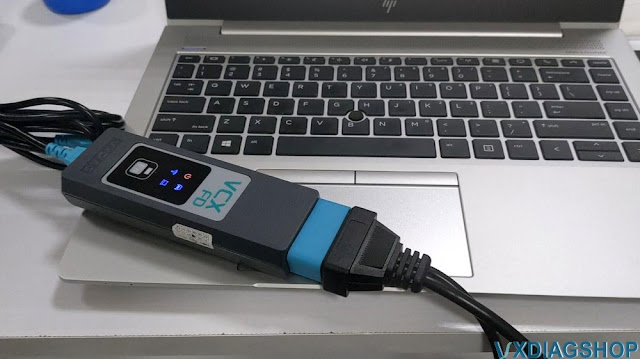VXDIAG PSA Not Read Peugeot Partner 2006 Modules?
Problem:
Set up VXDIAG VCX SE with PSA Diagbox v9.85 software.
The program starts, successfully identifies the car based on the chassis
number.
The diagnostic function does not start. 9.85 software detects the VIN
automatically then disconnects,and cannot read modules. It's a Peugeot Partner
1.6HDI 2006.
Solution:
VXDIAG PSA device is for 2006 and onwards CANBUS models.
Try manual selection instead of automatic detection.
If it still fails, the software is missing database for this model.
For 06 and older Peugeot Citroen models, especially k-line models, use the old lexia3 interface instead.
How to Fix VXDIAG Benz WIS Error Initialization Failed?
Problem:
Got the VXDIAG VCX SE Benz and software hard drive. Try to run WIS2025 software on desktop. It reported an error initialization failed.
Solution:
The software may be corrupted if the WIS or EPC reported error initialization failed.
2 solutions:
1). Run WIS EPC via Virtual machine (click this icon on the desktop)
2. Change a new hard drive.
VXDIAG VCX FD Firmware and License Update Failed Solution
Problem:
The device is a VXDIAG
VCX FD with a GM software license.
However, the license does not appear in VX
Manager (even though the correct beta version vx manager for
VCX FD is installed). Attempting to install the Passthru
driver fails with the error:
“The device license for this
application is invalid or expired.”
Additionally, firmware updates are
blocked, stating the license is invalid.
Solution:
- Verify Software Compatibility:
- Ensure you are using the correct beta version of VX Manager specifically designed for VCX FD, not the regular VX Manager.
- Check Firmware & License Status:
- If the device shows firmware version 2.0.4.1 but fails to update to 2.3.1.1 while displaying “license invalid”, this may indicate a hardware issue.
- In such cases, contact your dealer and request a repair or replacement for the device.
VXDIAG Renault CLIP V219 Vehicle Selection is Gray Solution
Problem:
After installing the VXDIAG
VCX SE Renault CLIP V219 software, the vehicle model selection
options are grayed out and cannot be selected.
What is the solution to this
problem?
Solution:
Ensure that the Renault VCI driver is properly installed.
Install the RENAULT VCI Driver and VX Manager, and make sure the Renault driver is installed within VXManager.
If the issue persists, it may be due to the computer’s operating system. Avoid installing the software on a Home Edition system.
Try reinstalling the software on a different computer system.
VXDIAG Update New BMW Driver V1.5.2
VXDIAG BMW released a new driver version 1.5.2 on March 19th, 2025.
Previous driver version:
Version 1.5.1.240422
Current driver
version:
2025.03.17
V1.5.2.250317
Fix KWP2000*(B8) protocol issues in some older models.
Update BMW ICOM driver in VX Manager.














